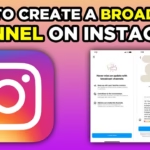Going viral looks random from the outside. It is not. The right idea, with the right hook and format, can spark more clicks, shares, and saves than a week of average posts. An AI idea generator helps creators and teams find those winning ideas fast.
It pulls trends, suggests hooks, and shapes formats for blogs, YouTube, TikTok, Reels, and more. This guide focuses on outcomes: more clicks, more shares, more saves. It also cuts the fluff and gives a clear shortlist, simple criteria, and a step-by-step workflow anyone can use today.
These picks are real, widely used tools, current as of November 2025: Ahrefs’ AI Content Idea Generator, HubSpot’s Blog Ideas Generator, Team-GPT, ChatGPT, Copy.ai, and Rytr. The goal is simple: pick one, follow the workflow, and publish with confidence.
Here is the roadmap: what “best” means for virality, the top tools by use case, a 5 minute workflow, practical prompts, and mistakes to avoid. Then a short challenge to push momentum this week.
What Makes an AI Idea Generator the Best for Viral Content?
“Best” is not about fancy features or shiny buttons. It is about repeatable results tied to clear metrics. Viral ideas move people to click, watch, save, and comment. A top tool should help a creator do that faster and with less guesswork.
Key outcomes to track:
- Clicks and click through rate on thumbnails, titles, and links
- Watch time and completion rate on video
- Saves and replays for short form
- Comments and shares as social proof
- Search traffic and keyword rankings for evergreen reach
A strong AI idea generator helps at each step. It pulls topics with built-in demand, adds hooks with clear promises, and outputs formats that fit the platform. It also helps teams move from brainstorm to publish without friction.
Plain and practical signals that point to “best”:
- Ideas align to search intent, so users find answers fast
- Hooks show novelty and a payoff, so people tap or click
- Formats fit the platform, so the algorithm can push it
- Output is fast, varied, and easy to test in batches
- Collaboration is smooth, so teams can scale
If it cuts time to a high quality draft, boosts first hour engagement, and gives a steady stream of testable angles, it earns a spot on the shortlist.
Clear criteria: trends, data, speed, and variety
- Trend awareness or SEO data: Finds rising topics and search intent, which boosts clicks and long tail reach.
- Strong hooks and angles: Sharp promises and curiosity gaps lift click through rate and shares.
- Fast idea generation with variations: More shots on goal, faster winners.
- Format variety for Reels, Shorts, tweets, threads, blog posts, and emails: Fits the place where people will consume it.
Viral math: hook, emotion, novelty, and share triggers
A hook is the first line that makes a person stop. It promises value, teases a gap, or shows a bold claim that the rest of the content proves.
Emotion and novelty make people care. A clear promise makes them act. That mix drives taps, watches, and shares.
- Blog headline example: “The 7 minute SEO fix that doubled my click through rate”
- TikTok opener example: “This 10 second hook gets 40 percent more saves, here is how”
SEO and social signals that boost reach
Easy signals to watch:
- Search intent match: Topic solves the query type, informational or transactional
- Click through rate: Title and thumbnail or hook earns the click
- Average watch time and completion rate: People stay to the payoff
- Save rate: High utility, people want to revisit
- Comment prompts: Clear asks drive replies and debates
Idea quality lifts each signal. A precise topic wins intent. A sharp hook wins the click. A tight structure delivers the payoff and boosts watch time. A clear ask boosts comments and saves.
Fit the workflow: from idea to publish
A helpful tool fits the real work:
- Brainstorm: Generate 20 to 50 ideas with hooks and formats
- Cluster: Group by search intent or theme
- Pick winners: Choose 3 to 5 with highest upside
- Draft: Expand into outlines, scripts, or captions
- Schedule: Assign, calendar, and track
- Team extras: Reusable prompts, shared libraries, comment threads
Collaboration and prompt reuse save hours. Teams can build repeatable prompt chains for brand voice and content types.
Best AI Idea Generators for Blogs and SEO Traffic (2025 Picks)
This set works well when the goal is ranking topics that also spread on social. These picks are current as of November 2025 and are widely used for data backed ideas and clean titles.
Ahrefs’ AI Content Idea Generator: Data driven topics with viral reach
Ahrefs blends AI with deep SEO data. It surfaces search intent, traffic potential, and keyword clusters. It is strong for topics that rank and still carry social hooks.
- Pros: Data backed ideas, keyword clusters, clear intent
- Cons: Freemium limits, more technical than basic tools
- Best for: Blogs, YouTube topics, long form outlines
Starter prompt: “Suggest 10 viral blog topics about [topic] that match informational intent, include traffic estimates, and show a hook for social.”
HubSpot’s Blog Ideas Generator: Fast titles and angles that spark clicks
HubSpot’s generator turns 1 to 5 keywords into quick headline lists. It is simple and fast, ideal for weekly planning.
- Pros: Simple, fast, business friendly frameworks
- Cons: Can be generic, less data depth
- Best for: Quick headline lists, idea refreshers
Starter prompt: “Give 15 blog titles for [topic], each with a power word and a curiosity gap.”
Team-GPT: Custom prompts for niche viral ideas and collaboration
Team-GPT focuses on custom prompt building, multi-model support, and teamwork. It lets teams build prompt chains, keep brand voice, and scale briefs.
- Pros: Tailored outputs, reusable chains, collaboration
- Cons: Platform learning curve
- Best for: Teams that want consistent voice and SEO minded briefs
Starter prompt: “Act as a content editor. Create 12 viral blog ideas for [audience] about [topic], grouped by search intent, each with a 1 line hook and CTA.”
Best AI Idea Generators for Social Media and Short Form
These tools shine for TikTok, Reels, Shorts, tweets, threads, and captions. They favor speed, catchy openings, and bite-size scripts.
ChatGPT: Rapid brainstorms, hooks, and captions for any platform
- Pros: Very flexible, fast, many formats
- Cons: Not specialized for virality, ideas may need refining
- Best for: Quick scripts, caption ideas, cross platform variations
Prompt: “Give 20 TikTok hooks about [topic] at a 7th grade reading level. Each under 12 words. Add an emoji at the end.”
Copy.ai: Trend aware ideas and content banks
- Pros: Lots of short form templates, steady flow of ideas, good for trend inspired content
- Cons: Can feel generic without strong inputs
- Best for: Content calendars, rapid idea lists
Prompt: “Create 30 Instagram caption ideas for [topic], grouped by pain, myth, quick tip, and story.”
Rytr: Quick, catchy lines ready to post
- Pros: Fast, affordable, strong at short copy like captions and emails
- Cons: Less depth for long form
- Best for: Polished one liners, subject lines, CTA variants
Prompt: “Write 25 punchy one liners about [topic], each with a unique CTA.”
How to Get Viral Ideas in Minutes With Any Tool
A repeatable system beats random brainstorming. Use this lightweight process to go from blank page to three publish-ready ideas in minutes.
A 5 minute workflow that scales
- Pick a narrow audience and problem
- Example: “Busy solo founders who need daily LinkedIn ideas”
- Pull a seed keyword or trend
- Use Ahrefs for “how to [topic]” or TikTok search suggestions
- Ask for 20 ideas with strong hooks
- Include intent, audience, and a format, ask for one line hooks
- Cluster into 3 themes
- Group by search intent or pain point: basics, quick wins, mistakes
- Pick 3 winners and create variations for 3 platforms
- Turn one idea into a blog title, 3 TikTok hooks, and an email subject line
- Save prompts for reuse
- Store the best prompts and outputs in a shared doc or prompt library
Quick checklist to keep ideas punchy:
- One clear promise in the hook
- Plain words, no buzzword soup
- Payoff in the first 15 seconds or first paragraph
- A clear ask for a comment, save, or click
- One idea per post, not five mashed together
Prompt templates that drive shares
Blogs
- “Problem, Promise, Proof, Prompt”: “Write a blog outline on [topic] for [audience]. Start with the problem, state a clear promise, add three proof points with data or examples, end with a prompt to comment or save.”
YouTube
- “Myth, Truth, Action”: “Create a 7 point video script on [topic]. Open with a common myth, reveal the truth, give one action per point, add time stamped hooks.”
TikTok and Reels
- “Before, After, Bridge”: “Give 15 hooks for [topic] using Before, After, Bridge. Keep under 10 words, include a concrete benefit.”
- “Pain, Quick Tip, CTA”: “Write 20 IG captions about [topic]. Each starts with a pain, includes one quick tip, ends with a save or comment CTA.”
- “Problem, Insight, Example, Question”: “Draft 10 LinkedIn posts on [topic]. One short paragraph per section, end with a question that invites replies.”
Email subject lines
- “Curiosity plus payoff”: “Write 25 subject lines for [topic]. Under 45 characters, clear benefit, 1 curiosity word.”
Layer trends and SEO for compounding reach
Start with search demand, then create social hooks from the same core idea. This gives both immediate and long tail results.
Example flow:
- In Ahrefs, find an informational query like “how to batch create Reels”
- Draft a blog title: “How to Batch Create 10 Reels in 60 Minutes”
- In ChatGPT or Copy.ai, generate five Shorts hooks from the same intent:
- “Create 10 Reels in 1 hour, this template”
- “Stop filming daily, batch this way”
- “The 60 minute Reel system for busy founders”
- “One script, five Reels, copy this flow”
- “This checklist makes Reels 3 times faster”
- Build a simple blog outline, then embed the video snippets
Test, measure, and iterate like a pro
Keep metrics simple:
- Hook to view rate
- Average watch time, completion rate
- Save rate and comment rate
- Click through rate for links
Run A/B tests on two hooks per post. Change only the first line. Weekly review:
- Keep winners, expand them
- Remix near misses with a sharper hook
- Drop low performers and move on
Mistakes to Avoid and Ethical Tips
Shortcuts can kill reach and trust. These pitfalls are common, and easy to skip with a simple checklist.
Generic ideas and buzzword soup
Vague ideas do not get clicks. Specific ideas do.
- Before: “Innovative strategies for business growth”
- After: “3 pricing mistakes that kill churn for subscription apps”
Always name the audience, the pain, and the promise.
Ignoring audience and platform fit
Each platform has a tone, length, and rhythm.
- TikTok or Reels: Hook in 2 seconds, one idea per clip
- YouTube: Title and thumbnail tell the same story, payoff by minute one
- LinkedIn: One clear insight and a question, keep it skimmable
- Instagram: First line carries the save trigger, make the tip concrete
Posting without a content calendar
A light plan beats guessing. Use 3 themes, 9 posts, 3 formats.
Simple weekly template:
- Monday: Theme A, one blog idea, one Reel hook, one email subject
- Tuesday: Theme B, one thread, two Stories
- Wednesday: Theme C, one YouTube outline, two Shorts hooks
- Thursday: Theme A, one carousel, one LinkedIn post
- Friday: Theme B, one live prompt, one recap post
Planning time: under 10 minutes once the themes are set.
Attribution, originality, and brand safety
Credit stats and quotes. Check for plagiarism with a tool. Skip risky claims. Use a clean disclaimer when needed.
Simple disclaimer: “This content is for education only, not legal, medical, or financial advice.”
Conclusion
The best AI idea generator depends on the goal. Use Ahrefs and HubSpot when data backed blog topics and clean titles matter. Choose Team-GPT for custom team prompts and repeatable briefs. Tap ChatGPT for flexible brainstorms across formats. Turn to Copy.ai and Rytr for fast short form lines that are ready to post.
Pick one tool, follow the 5 minute workflow, and publish three posts today. Try a 7 day challenge: one idea per day, test two hooks, track saves and comments. Small tests stack up to big wins. Bookmark this guide, share it with a teammate, and commit to one week of focused output. The next viral post starts with a clear hook and a simple plan.
Quick Reference Table
| Tool | Best For | Free Tier | Strengths | Watchouts |
|---|---|---|---|---|
| Ahrefs AI | SEO topics, YouTube ideas, long form | Limited | Data, intent clarity, clusters | More technical, paid core |
| HubSpot | Fast blog titles and angles | Yes | Simple, quick lists | Basic ideas, less data |
| Team-GPT | Team prompts, briefs, brand voice | Partial | Collaboration, reusable chains | Learning curve |
| ChatGPT | Hooks, scripts, captions across formats | Yes | Flexible, fast | Needs refining |
| Copy.ai | Trend-inspired short form and calendars | Partial | Templates, steady idea flow | Generic without good input |
| Rytr | One liners, subject lines, CTAs | Partial | Fast, affordable | Not for deep long form |















